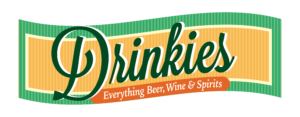Champagne, the epitome of celebratory drinks, has enchanted palates and marked special moments for centuries.
In this page, we delve into how Champagne is made, uncover the rich history that defines this sparkling wine, and traverse the globe to discover the best Champagne regions.
What is Champagne?
Champagne stands as a sparkling wine with origins deeply rooted in the Champagne wine region of France. Governed by strict appellation regulations, Champagne production adheres to specific vineyard practices, exclusive grape sourcing from designated areas, precise grape-pressing techniques, and a distinctive secondary fermentation process within the bottle to induce carbonation.
The primary grape varietals employed in crafting Champagne include Pinot noir, Pinot meunier, and Chardonnay, contributing to the majority of Champagne production. Additionally, small quantities of Pinot blanc, Pinot grigio, Arbane, and Petit Meslier are also vinified.
Throughout the 17th, 18th, and 19th centuries, Champagne became intricately linked with royalty, and leading producers strategically associated their Champagnes with nobility and royalty through strategic advertising and distinctive packaging. This intentional branding effort contributed to the widespread popularity of Champagne, extending its allure beyond aristocratic circles to captivate the emerging middle class.
How is Champagne Made?
- Harvesting: The winemaking journey begins with meticulous grape harvesting. Champagne grapes—Chardonnay, Pinot Noir, and Pinot Meunier—are plucked at the peak of ripeness, ensuring a balance of sugars and acidity.
- Pressing: The harvested grapes undergo gentle pressing to extract their juice. The juice, now the base wine, is crucial for the subsequent steps.
- Fermentation: The base wine experiences primary fermentation, where sugars transform into alcohol. This initial alcoholic content provides the foundation for the upcoming sparkle.
- Blending: Champagne mastery often involves blending wines from different vineyards or vintages. This step aims to achieve a consistent house style.
- Bottling with Yeast: The blended wine is bottled, and a mixture of yeast and sugar is added to initiate secondary fermentation. The bottles are sealed with crown caps.
- Aging on Lees: Bottles rest horizontally, allowing the yeast cells to interact with the wine, enhancing complexity. Extended aging contributes to the rich character of Champagne.
- Riddling: Bottles are gradually turned and tilted to consolidate yeast sediment in the neck.
- Disgorging: The neck is frozen, and the frozen sediment is expelled. The bottle is then topped up with a mixture called dosage—a combination of wine and sugar.
- Corking: The final step involves corking the bottle, ensuring that the effervescence remains captured until the cork is popped in celebration.
History of Champagne
The inception of sparkling champagne in France, dubbed “the devil’s wine” due to exploding bottles, began with accidental discovery. Adolphe Jaquesson’s 1844 muselet invention addressed cork dislodgment, a crucial development. Early sparkling wines followed the méthode rurale, shifting to the méthode champenoise in the 19th century, sparking a production surge to 20 million bottles by 1850, eventually reaching a record 338.7 million bottles in 2007.
During the 19th century, champagnes were notably sweeter, with a pivotal shift towards dryness initiated when Perrier-Jouët decided not to sweeten the 1846 vintage, marking a turning point. The term “Brut Champagne” emerged in 1876 to designate drier varieties.
To bear the esteemed “Champagne” label, wines must strictly adhere to regulations, including being bottled within 100 miles of the Champagne region in France. European law and a 1891 treaty safeguard this designation, specifying that authentic champagne must be crafted from specific grapes – Pinot Meunier, Pinot Noir, or Chardonnay – cultivated within the Champagne territory.
This legal protection ensures the geographical and varietal authenticity of wines bearing the coveted “Champagne” name.
Best Champagne Regions
- Champagne, France:
- The birthplace of Champagne, this region’s cool climate and chalky soils provide ideal conditions for cultivating the classic grape varieties.
- Napa Valley, USA:
- Known for producing exceptional sparkling wines, Napa’s winemakers have embraced the traditional method to craft exquisite American sparklers.
- Victoria, Australia:
- With a reputation for cool-climate wines, Victoria’s wineries create sparkling gems that rival their European counterparts.
- Canterbury, New Zealand:
- New Zealand’s South Island, particularly Canterbury, is gaining acclaim for its high-quality sparkling wines, showcasing the region’s unique terroir.
- Penedès, Spain:
- While renowned for Cava, Penedès also produces exceptional traditional method sparkling wines, offering a delightful Spanish twist.
Best Foods to Pair with Champagne
- Oysters:
- The briny freshness of oysters complements the crisp acidity of Champagne, creating a classic and delightful pairing.
- Triple Cream Brie:
- Creamy cheeses like Brie find a perfect match in the effervescence of Champagne, balancing richness with bubbles.
- Sushi and Sashimi:
- The versatility of Champagne allows it to dance elegantly with the delicate flavors of sushi and sashimi.
- Truffle Popcorn:
- The earthy aroma of truffle popcorn harmonizes with the toasty and complex notes found in well-aged Champagnes.
- Lobster Thermidor:
- The decadence of Lobster Thermidor finds equilibrium with the lively acidity and effervescence of Champagne.
Champagne – The Classic Bubbly Treat
As we conclude our journey through the effervescent world of Champagne, we celebrate its simple yet elegant making, rich history, and global allure.
From the chalky soils of Champagne to the vineyards of Napa Valley and beyond, each sip encapsulates a legacy of craftsmanship and jubilation.
So, whether you’re toasting to life’s milestones or simply reveling in the joy of the moment, Champagne stands ready to effervescently elevate any occasion.
Here’s to the timeless allure of Champagne, a beverage that continues to sparkle in the hearts of enthusiasts worldwide. Cheers!

























